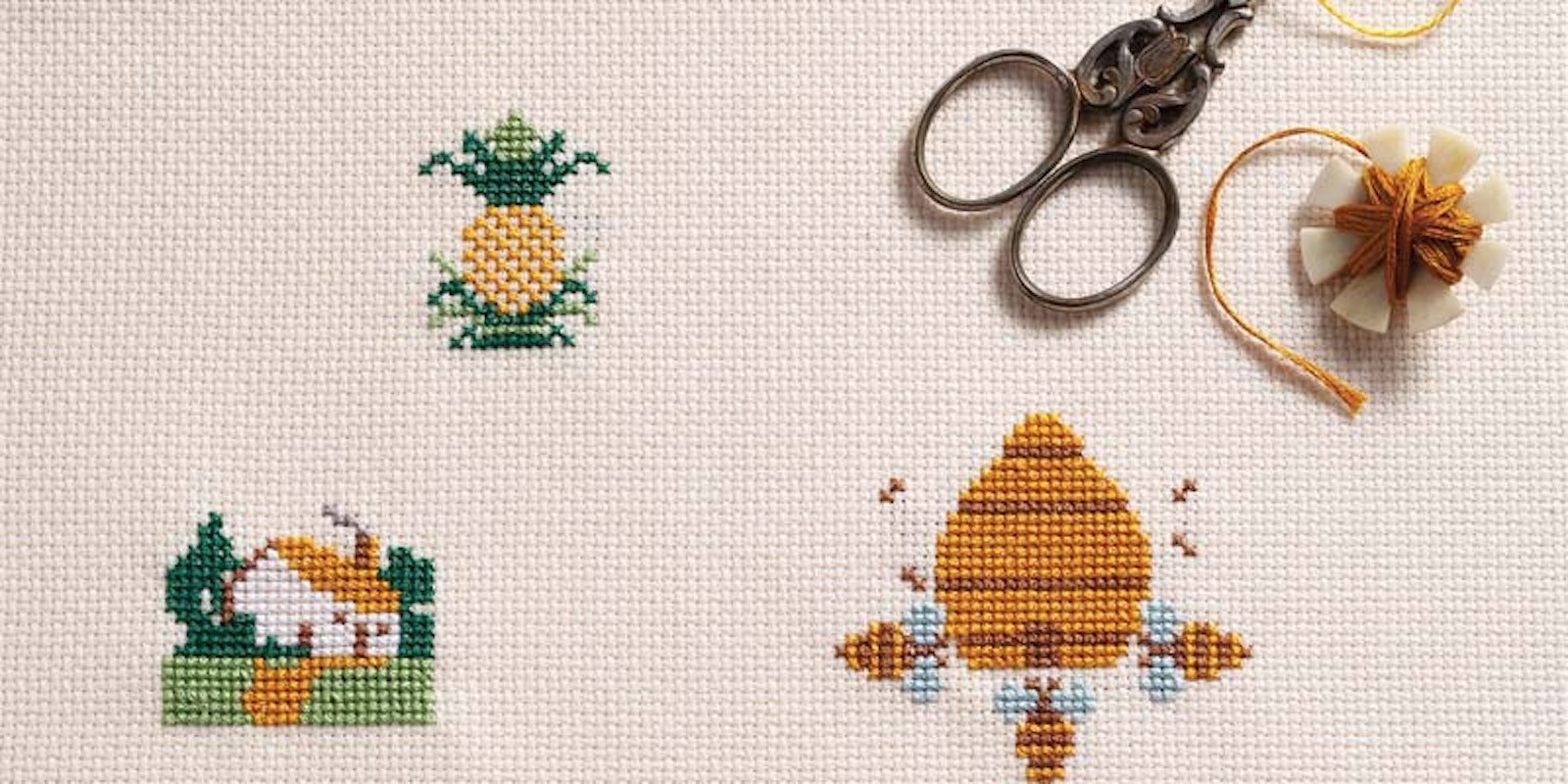For centuries, samplers have been a common way for needleworkers to not only practice their craft but showcase their ability with needle and thread. In PieceWork’s September/October 2014 issue, Christopher John Brooke Phillips describes the hidden symbolism in several common historical motifs in cross-stitch samplers. What is the meaning behind motifs like the pineapple?
Patricia Phillips’s pineapple is worked in cross-stitch with two strands of cotton floss on 18-count Zweigart Davossa evenweave fabric. Photo by Joe Coca.
Today pineapples are a produce department staple, available year round. But not so long ago, pineapples were an exotic treat, reserved for nobility and the upper classes of the west. Christopher explains:
“This traditional symbol of hospitality appeared in needlework in both Britain and America. The rarity of the fruit in the sixteenth century also gave it a reputation for opulent extravagance. A painting in the Royal Collection in England of King Charles II (1630–1685) depicts Charles receiving the first pineapple, allegedly, grown in Britain (in a hothouse in 1670). A pineapple-growing mania swept eighteenth-century England and numbered among its aficionados the poets William Cowper (1731–1800) and Alexander Pope (1688–1744). On America’s East Coast, the pineapple was displayed in windows or on a stake by the front door as a sign of a sailor’s safe return. The Shirley Plantation on the James River in Charles City County, Virginia, established by a crown grant in 1613, is one of several area plantations to incorporate the pineapple in its decoration.”
The mysteries of needlework provide an endless source of fascination! The next time you spy a pineapple motif stitched onto a piece of cloth or carved into a piece of furniture, remember, it is a traditional sign of welcome and friendliness. Add this sweet motif to your next cross-stitch sampler. Find out more about the hidden meanings of other motifs like the anchor, the beehive, the cottage, and others in the September/October 2014 issue of PieceWork.
Happy stitching!
Elizabeth



